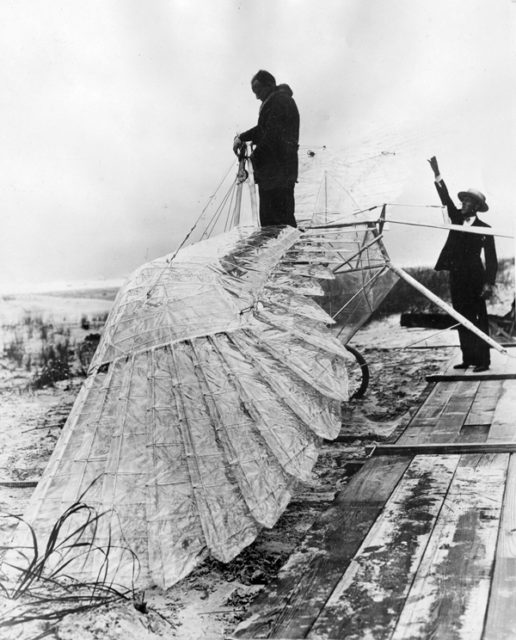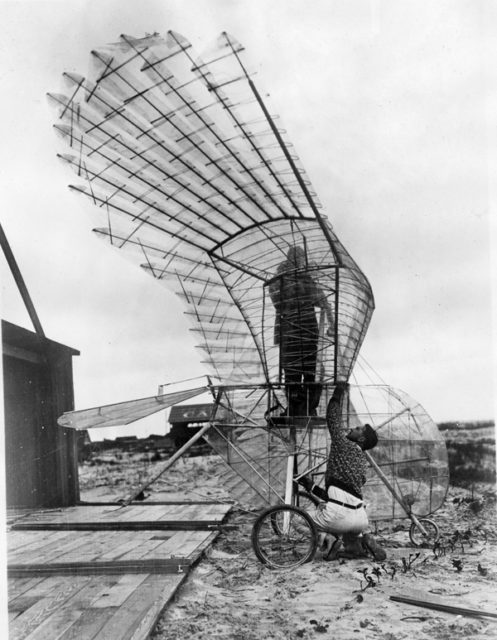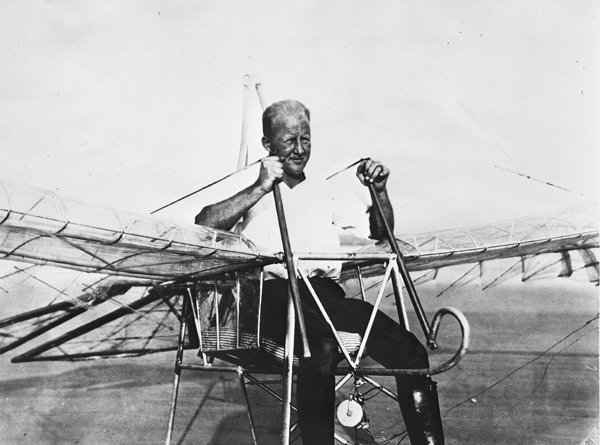Despite tremendous advances in fixed-wing, powered airplanes during World War I, some inventors persisted with ornithopters.
The ornithopter was a wing-flapping, foot-propelled flying machine made by George R. White, a former flying instructor from Stoney Brook, Long Island, New York, and a man who, reportedly, trained military aviators during World War I.

The idea was to imitate the flapping-wing flight of birds, bats, and insects. The frame weighed 118 pounds, the wingspan was 29.5 feet, and it was 8 feet in length. It was made of chrome molybdenum covered with a non-inflammable transparent celluloid fabric, having a tensile strength of 10,000 pounds to the square inch. White hoped to attain a speed of 40 miles per hour. Appropriately enough, he named his ornithopter “White Eagle.”


Interest was high in the experiments, which drew frequent coverage in The St. Augustine Record during April, May, and June. Trial flights were conducted on the beach at St. Augustine. The residents and visitors got a chance to see it happen in the spring of 1928 as aviator George White experimented with his wing-beating, foot-propelled ornithopter. He had to operate two-foot levers and one hand lever to make the wings and “elevator” (tail) function. Unfortunately, it crashed on a test flight, but it was later improved. People were even fascinated by the repairs. After a crash forced repairs, hundreds of people visited the hangar to get their first glimpse of the ornithoper.

Over six years, George White made a total of 21 “secret” flights before coming to St. Augustine. On June 16, 1928, White narrowly escaped death during the flight experiments but he reportedly kept experimenting with his ornithopter into the 1930s.
Ornithopters live on, including the model ones flown by hobbyists. Those can be rubber-band powered or radio-controlled.
